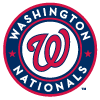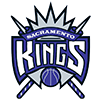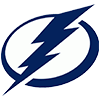The 2020 NFL season was unlike any other as teams navigated a campaign in the midst of a global pandemic. The threat of COVID-19 loomed throughout, and players were unable to prepare as usual without benefit of a normal offseason or preseason. Players were isolated from team medical staff for much of last summer, and then without preseason games did not participate in game-like conditions until Week 1 of the regular season.
Multiple top-rated fantasy players missed substantial chunks of the year, including Christian McCaffrey, Saquon Barkley, Dak Prescott and Odell Beckham. One injury, though, was particularly impactful across the league — the dreaded ACL tear. According to league data, in-season anterior cruciate ligament tears reached their highest total in five years.
One of the 40 players who sustained an ACL injury last year was rookie Joe Burrow. In Week 11, the Bengals quarterback suffered a complex knee injury that included tears to his ACL and medial collateral ligament (MCL).
ACL tears have become commonplace among quarterbacks in the NFL, with Jimmy Garoppolo, Deshaun Watson and Carson Wentz just a few of the names to sustain the injury in recent seasons. Injury data on 13 ACL tears from 11 quarterbacks (Sam Bradford and Carson Palmer each suffered two, poor guys) is encouraging for those considering investing in Burrow this year.
Those quarterbacks, going back to 2005, are listed in the chart below. Some, like Burrow, had additional knee injuries that accompanied the ACL tears.
The 2020 NFL season was unlike any other as teams navigated a campaign in the midst of a global pandemic. The threat of COVID-19 loomed throughout, and players were unable to prepare as usual without benefit of a normal offseason or preseason. Players were isolated from team medical staff for much of last summer, and then without preseason games did not participate in game-like conditions until Week 1 of the regular season.
Multiple top-rated fantasy players missed substantial chunks of the year, including Christian McCaffrey, Saquon Barkley, Dak Prescott and Odell Beckham. One injury, though, was particularly impactful across the league — the dreaded ACL tear. According to league data, in-season anterior cruciate ligament tears reached their highest total in five years.
One of the 40 players who sustained an ACL injury last year was rookie Joe Burrow. In Week 11, the Bengals quarterback suffered a complex knee injury that included tears to his ACL and medial collateral ligament (MCL).
ACL tears have become commonplace among quarterbacks in the NFL, with Jimmy Garoppolo, Deshaun Watson and Carson Wentz just a few of the names to sustain the injury in recent seasons. Injury data on 13 ACL tears from 11 quarterbacks (Sam Bradford and Carson Palmer each suffered two, poor guys) is encouraging for those considering investing in Burrow this year.
Those quarterbacks, going back to 2005, are listed in the chart below. Some, like Burrow, had additional knee injuries that accompanied the ACL tears. The chart shows the date of each injury, the QB's return-to-play date and the days elapsed. The return-to-play date listed is the first time the quarterback appeared in a preseason or regular-season game. (Note: Teddy Bridgewater is not included in the chart because his unique knee injury went far beyond the ordinary ACL tear, unlike the quarterbacks listed.)

The average missed time for these quarterbacks was 293 days, or little more than nine and a half months. Even quarterbacks who suffered more than an isolated ACL tear, like Burrow, were usually back in time for Week 1. In fact, Wentz, who was injured in December, is the only quarterback on the list who did not make it back by the start of the season, returning Week 3.
Burrow injured his knee in late November, meaning a Week 1 return is likely if he follows precedent. Preliminary positive reports regarding Burrow's progression through the initial stages of rehab and his limited participation in Bengals OTAs further strengthen the idea that late August or early September is a realistic target date for a return to games.
The medical evidence is strong in Burrow's favor as well. A 2010 study published in The American Journal of Sports Medicine analyzed the return-to-play rate among NFL players who underwent an ACL repair. The results revealed a high return-to-sport (RTS) rate, particularly for players selected in the first three rounds of the NFL Draft.
For those who returned to play, the average draft round was 3.4. The average draft round for those who did not return was 6.4. That bodes well for Burrow, the top selection in last year's draft.
Of course, a return to the field doesn't always guarantee a return to top form. Fortunately, multiple studies have also examined the effectiveness of players returning from ACL reconstruction. These findings provide more reason for optimism regarding Burrow.
A 2014 study in the Journal of Orthopedics examined the return-to-play rate of NFL quarterbacks and evaluated certain performance markers versus other quarterbacks. The quarterbacks who suffered ACL injuries showed no statistically significant differences in these performance variables, including passing yards, touchdowns and completion percentage per season.
These findings match the eye test with players like Watson, who returned to his previous high level of performance the season following his injury. Watson is an interesting comparison to Burrow given his age and pedigree. He improved his passer rating, interception rate, completion percentage and passing yards per game coming off his injury.
However, similar studies don't paint quite as promising an outlook for non-quarterbacks like Barkley, Beckham and Courtland Sutton. A 2021 study in The Orthopaedic Journal of Sports Medicine found the return-to-sport rate is lower for running backs (64.5 percent) and wide receivers (60 percent) than quarterbacks (92 percent).
The recovery timeline for these players is also longer, with the average elapsed time more than 13 months. Furthermore, wide receivers reported a statistically significant drop in yards per reception, receptions per game and touchdowns per season when compared against healthy controls.
These decreases in performance may be attributed to the nature of the running back and wide receiver positions, where sudden start-and-stop motions are needed to create separation between defenders, find and hit holes at the line of scrimmage or avoid would-be tacklers in the open field. These actions put a high degree of stress on the lower extremity, making it more difficult for the knee's stabilizing ligaments to divert and absorb shock. A wide receiver or running back may need additional rehab time to adequately prepare their legs for these demands of agility.
However, this does not spell doom and gloom for all the players coming off an ACL injury this year. You will notice, for example, in our review of player injury situations on the following pages that Beckham is listed as "high risk," while Sutton is "low risk," even though both wide receivers suffered ACL injuries last season.
The reason is two-fold. Sutton tore his ACL in Week 1, giving him more time to recover than Beckham, who was injured Week 7. What's more, Beckham has a much more extensive injury history than Sutton. Each player comes with his own unique set of variables that determines his recovery and whether a return to top form is likely.
NEW 17-GAME SCHEDULE
Before we look at specific player injury situations, a quick word about this year's new schedule. While each player has his own level of injury risk, all players face greater risk with the addition of a 17th regular-season game.
However, the increased possibility of injury with an extra regular-season game might not be as impactful as some fear. First, the league also shortened the preseason by a game, keeping the total schedule at 21 weeks plus playoffs. More significant are the findings of a 2020 study in The American Journal of Sports Medicine that examined lower extremity injuries in the NFL from 2015 through 2018. While the study showed a majority of these injuries occurred during games, it also revealed the injury rate was higher in preseason (11.5 per 10,000 player-plays in games) than in the regular season (9.4).
Below is a look at some important injury concerns entering 2021 fantasy drafts. Players listed as "high risk" should be avoided or drafted only at a large discount. "Medium risk" players are worth drafting at a discount or if their injury risk is already baked into their draft price. "Low risk" means the player's injury history should not impact his draft price.
HIGH RISK
James Conner, RB, Cardinals
Injury: Toe sprain
Conner underwent surgery after injuring himself in an offseason recreational vehicle accident. Details were vague, but he described it as "a little toe issue" and "not as serious as a whole turf toe injury." Turf toe usually takes about three months for recovery, and Conner was healthy enough to participate in OTAs in early June. Still, his long-term durability is a concern. Connor has suffered an assortment of injuries in his four-year career, including a significant MCL sprain that required surgery, multiple quadriceps injuries, ankle sprains and an acromioclavicular (AC) sprain in his right shoulder. He's averaged just 12.5 games per season and has never played more than 14 games, nor started more than 12. Conner's summer ADP (RB40, per NFFC) is still not enough of a discount, considering he's not likely to play a full season and there are higher-upside running backs available in that range.
Marlon Mack, RB, Colts
Injury: Achilles Tendon Rupture
The Colts are optimistic Mack will be back for training camp after tearing his Achilles tendon Week 1 last season. But that might be overly optimistic. The average time lost with Achilles tears is closer to a year, meaning Mack might not return to the field until late in training camp or even early in the season. And then he'll still need time to get up to game speed. Furthermore, a 2017 study by Foot & Ankle International showed a decline in performance score among NFL running backs coming back from an Achilles tear, and the injury often alters career length. Couple these odds with the presence of Jonathan Taylor atop the Colts depth chart and it's hard to have much confidence in Mack's long-term fantasy value.
Odell Beckham, WR, Browns
Injury: ACL Tear
Considering the problems associated with wide receivers coming off ACL tears (see page 33), Beckham's return from the knee injury he suffered Week 7 last year is less than reassuring. Beckham had surgery in November and probably will be ready by late preseason, but a smooth recovery might be harder because he's a bit older (29 in November) and has an extensive list of prior injuries, including a sports hernia, broken ankle and multiple soft-tissue strains of his lower extremities. As such, his risk entering this season is higher than the normal victim of an ACL tear.
Parris Campbell, WR, Colts
Injury: MCL, PCL Tears
Campbell has played just nine games the last two years — 263 snaps — and missed the majority of last season after injuring his posterior cruciate ligament (PCL) in Week 2. The PCL crosses behind the better known ACL and acts as the primary axis for rotation at the knee while preventing hyperextension. In May, team doctors cleared him to return, but Campbell's injury history works against him. His rookie year he suffered a hamstring strain, broken hand, core muscle injury and a broken foot that finally ended his season. The draft-day discount (WR67, per NFFC) might be big enough to gamble on his upside as the slot receiver in Indianapolis, but expecting him to play a full season seems like wishful thinking.
Kyle Rudolph, TE, Giants
Injury: Lisfranc Sprain
Rudolph missed the final four weeks of last season after spraining the ligament of the Lisfranc joint, a region of the mid-foot where the bones of the arch connect to the long bones of the foot. The injury complicated his signing with the Giants after it was determined in March that it had not adequately healed and Rudolph needed surgery. While the Giants are optimistic the tight end will be ready for Week 1, Lisfranc injuries are difficult to manage and often accompanied by a decline in performance. New teammate Evan Engram underwent Lisfranc surgery in December 2019 and wasn't out of a walking boot and running until April. He then needed three months of "very aggressive rehab" to be ready for training camp. A similar timetable for Rudolph would mean his rehab carries into the regular season.
MEDIUM RISK
Dak Prescott, QB, Cowboys
Injury: Compound Ankle Fracture
Prescott endured one of the more gruesome injuries of last season when he suffered a compound fracture and dislocation of his right ankle in Week 5. After an initial surgery, he required a second surgery several months later. The complexity of the injury and need for a second procedure is a bit concerning, but bone often heals nicely and Prescott indeed returned healthy for OTAs in May.
Tom Brady, QB, Buccaneers
Injury: Knee Debridement
Brady underwent a "clean-up" procedure in February that sounds more serious than it is, though it could be a sign that Father Time is catching up, as the knee in question is the one in which he previously tore his ACL. Brady's age — 44 when the season starts — and injury history with his knee elevates his risk somewhat this season.
Joe Burrow, QB, Bengals
Injury: ACL/MCL Tear
Pedigree, age and history suggest Burrow should return to at least the same performance level as last season, if not better. He still should be monitored in training camp, but his risk is likely already baked into his draft cost.
Saquon Barkley, RB, Giants
Injury: ACL Tear
The return-to-sport timing for running back ACL tears is close to a year, but Barkley, who was injured Week 2 last season, was noncommittal in June about whether he would be ready Week 1. Age (24) is on his side, and he should not lose a step when healthy, but the vagueness of his recovery and rehab timeline is concerning. When he does return to play, his touches might be limited at least initially.
Amari Cooper, WR, Cowboys
Injury: Ankle Debridement
Cooper underwent cleanup surgery on his ankle in January. It was likely routine maintenance, as he did not miss a game last season. But Cooper did not participate in OTAs this summer because he was still dealing with some residual irritation in the ankle. The situation is not considered a major setback, but the only prescription is rest. He was to take at least a month off from running. Check his status entering training camp.
Jalen Hurd, WR, 49ers
Injury: ACL Tear
A third-round pick in 2019, Hurd has yet to play a snap in the NFL. A stress fracture in his back cost him his rookie year, and he then tore an ACL last August. He should be healthy for training camp, but his injury history is a concern.
Julio Jones, WR, Titans
Injury: Hamstring Strain
Jones has been a constant presence on the injury report the last couple seasons, often due to lower extremity issues. This was particularly problematic last year when recurring hamstring problems limited him to nine games. He's healthy entering the season, but at 32, he's past the age when most receivers begin to decline.
Tyrell Williams, WR, Lions
Injury: Shoulder Labrum Tear
The veteran missed all last season after tearing the stabilizing ring of cartilage in his shoulder in late August. Surgery reduces the chance he suffers another dislocation, but there is a lot of variability with these types of injuries, which increases his risk.
LOW RISK
Patrick Mahomes, QB, Chiefs
Injury: Turf Toe
Mahomes has enough time to recover fully from offseason surgery on his big toe with minimal chance at a recurrence.
Matthew Stafford, QB, Rams
Injury: Thumb Ligament Tear
Stafford underwent offseason surgery on the ulnar collateral ligament in his throwing hand but recovered quickly and threw passes at OTAs unencumbered.
Tarik Cohen, RB, Bears
Injury: ACL Tear
Cohen was injured Week 3, giving him time to be ready for this season. The Bears can ease him in with David Montgomery and Damien Williams around.
Christian McCaffrey, RB, Panthers
Injury: High Ankle Sprain/Shoulder Injury/Quad Contusion
McCaffrey was limited to just three games last year. However, he returned for OTAs in May, declaring himself 100 percent healthy after his first practice.
Cole Beasley, WR, Bills
Injury: Fibula Fracture
Beasley played through a broken leg in the playoffs, but the fibula is not a major weight-bearing bone, and he should be 100 percent healthy by camp.
A.J. Brown, WR, Titans
Injury: Bilateral Knee Bone Bruise
Surgery on both knees is a concern, but the reason is minor. Brown excelled in spite of his knees and could be better with the root of his problems removed.
Courtland Sutton, WR, Broncos
Injury: ACL Tear
Sutton went down in Week 2 last season, giving him ample time to recuperate. Age (25) and pedigree work in his favor, and he should be ready for this season.
Blake Jarwin, TE, Cowboys
Injury: ACL Tear
Jarwin tore his ACL in Week 1 last season but returned to participate in a few drills in OTAs in May. A return to his previous level of play is probable.
This article appears in the 2021 RotoWire Fantasy Football magazine. Order the magazine now.








































